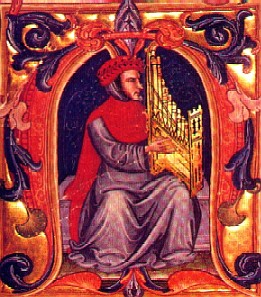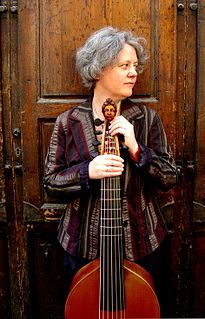Related Research Articles

Claudio Giovanni Antonio Monteverdi was an Italian composer, string player, choirmaster, and priest. A composer of both secular and sacred music, and a pioneer in the development of opera, he is considered a crucial transitional figure between the Renaissance and Baroque periods of music history.

Francesco Maria Veracini was an Italian composer and violinist, perhaps best known for his sets of violin sonatas. As a composer, according to Manfred Bukofzer, "His individual, if not subjective, style has no precedent in baroque music and clearly heralds the end of the entire era", while Luigi Torchi maintained that "he rescued the imperiled music of the eighteenth century", His contemporary, Charles Burney, held that "he had certainly a great share of whim and caprice, but he built his freaks on a good foundation, being an excellent contrapuntist". The asteroid 10875 Veracini was named after him.
Johannes Ciconia was an important Flemish composer and music theorist of trecento music during the late Medieval era. He was born in Liège, but worked most of his adult life in Italy, particularly in the service of the papal chapels in Rome and later and most importantly at Padua Cathedral.

Carlo Gesualdo da Venosa was Prince of Venosa and Count of Conza. As a composer he is known for writing madrigals and pieces of sacred music that use a chromatic language not heard again until the late 19th century. He is also known for killing his first wife and her aristocratic lover upon finding them in flagrante delicto. The responses to this and to his music have often gone hand in hand.

Ranuccio I Farnese reigned as Duke of Parma, Piacenza and Castro from 1592. A firm believer in absolute monarchy, Ranuccio, in 1594, centralised the administration of Parma and Piacenza, thus rescinding the nobles' hitherto vast prerogative. He is best remembered for the "Great Justice" of 1612, which saw the executions of a large number of Piacentine nobles suspected of plotting against him. Claudia Colla his mistress and her mother were accused of using witchcraft to stop him from having offsprings, and both were sentenced to death by burning. Because one of the conspirators, Gianfrancesco Sanvitale, falsely implicated several Italian princes, namely Vincenzo Gonzaga, Duke of Mantua and Cesare d'Este, Duke of Modena, in the plot, Vincenzo and Cesare's names appeared on the list of conspirators during formal court proceedings; as a result, Ranuccio's reputation among the rulers of Italy was irreparably damaged because it was evident that he gave credence to Gianfrancesco's obviously false confession. When, consequently, in the early 1620s, Ranuccio was looking for a bride for his younger legitimate son and heir, Odoardo, none of the Italian ruling families were forthcoming with princesses.

The Trecento was a period of vigorous activity in Italy in the arts, including painting, architecture, literature, and music. The music of the Trecento paralleled the achievements in the other arts in many ways, for example, in pioneering new forms of expression, especially in secular song in the vernacular language, Italian. In these regards, the music of the Trecento may seem more to be a Renaissance phenomenon; however, the predominant musical language was more closely related to that of the late Middle Ages, and musicologists generally classify the Trecento as the end of the medieval era. Trecento means "three hundred" in Italian but is usually used to refer to the 1300s. However, the greatest flowering of music in the Trecento happened late in the century, and the period is usually extended to include music up to around 1420.

Paolo Pandolfo is an Italian virtuoso player, composer, and teacher of music for the viola da gamba, born on January 31, 1964.
Fabrizio Dentice was an Italian composer and virtuoso lute and viol player.
Giovanni Battista Bassani was an Italian composer, violinist, and organist.
Bassani is an Italian surname. Notable people with the surname include:
Alfonso dalla Viola was an Italian composer and instrumentalist of the Renaissance. He was the principal composer at the Este court in Ferrara for about four decades in the middle sixteenth century, and was renowned as a player of several instruments, including the viola d'arco. While much of his incidental music, composed for court entertainments, is lost, several books of his madrigals have survived. His position as court composer in Ferrara paralleled that of Francesco Corteccia in the competing city of Florence.
Antonio Nola was a Neapolitan composer of whom little biographical information or music survives. He is to be distinguished from the better known Giovanni Domenico da Nola born 130 years earlier (?-1592).
Scipione Dentice was a Neapolitan keyboard composer. He is to be distinguished from his colleague and exact contemporary Scipione Stella, a member of Carlo Gesualdo's circle. He is also to be distinguished from his grandfather Luigi Dentice, the music theorist, and uncle Fabrizio Dentice, the lutenist.
Francesco Maria Bazzani or Bassani was an Italian baroque composer.

Margherita Aldobrandini, was an Italian noblewoman member of the Aldobrandini family and by marriage Duchess consort of Parma and Piacenza during 1600–1622. She was also Regent of both Duchies during 1626–1628 on behalf of her minor son.

The sonatas for viola da gamba and harpsichord, BWV 1027–1029, are three sonatas composed by Johann Sebastian Bach for viola da gamba and harpsichord. They probably date from the late 1730s and early 1740s.

Bettina Hoffmann is a German viola da gambist and cellist, musicologist, and music pedagogue. A specialist in Renaissance, and Medieval music, she is the leader of the Renaissance and Medieval ensemble of Modo Antiquo. She has an extensive discography, primarily on the Brilliant Classics and Tactus labels and participated in two Grammy-nominated recordings.
References
- ↑ The Early History of the Viol - Page 178 Ian Woodfield - 1988 "... players flourished around the turn of the century, of whom the best known was Orazio Bassani (Orazio della Viola). A few of his celebrated embellishments of madrigals have survived in manuscript sources; British Library Add. ms. ..."
- ↑ Early Music History: Volume 18: Studies in Medieval and Early ... - Page 268 Iain Fenlon - 2001 "... in addition to his musical employees, he hired Fabrizio Dentice, Orazio Bassani and several violinists ('violini') from Parma, as well as a number of Venetian musicians and cornettists; there was music for banquets..."
- ↑ Journal of the Viola da Gamba Society of America: Volume 36 Viola da Gamba Society of America - 1999 "Francesco Maria Bassani's notebook of counterpoint exercises Lezioni di contrapunton includes eight pieces "per viola bastarda"; three are attributed to Orazio Bassani (his uncle), and one to Vicenzo Bonizzi."